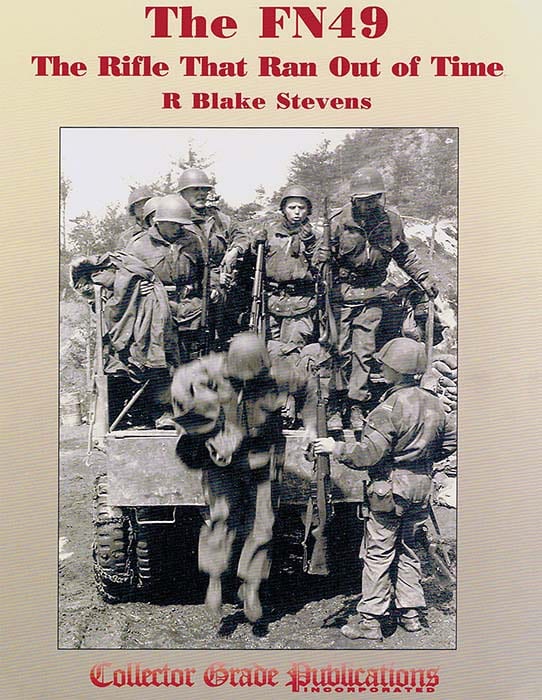By Dean Roxby
The Unappreciated SLR
The origins of the FN49 rifle go back to 1936, prior to WWII. The chief engineer at FN, Mr. Dieudonné Saive, designed a gas-operated semi-auto that used a tilting bolt method to lock the breech during firing. However, with the FN factory in Belgium captured by Nazi Germany early in WWII, the design that would become the FN49 would have to wait.
This book chronicles the development of this under-appreciated rifle in great detail, from the earliest attempts at self-loading rifles, to the end of production. Surprisingly, there was interest in self-loading battle rifles as far back as the early 1900s. In fact, in 1907, FN approached a German-born arms designer, Karl Brauning (no relation to John M. Browning). At the time, Mr. Brauning was working for the Dutch arsenal at Zandaam, Netherlands. He had recently patented a self-loading rifle that functioned by barrel recoil and locked the bolt by a pair of pivoting lugs that fit into recesses in the receiver. This rifle, as well as several other designs, took part in various arms trials in the following years. However, the start of WWI in 1914 interrupted this.
Following the end of WWI, work resumed in several countries regarding the adoption of a self-loading rifle. The U.S. chose the M1 Garand early enough to equip her army prior to entering WWII. Most other nations did not and had to go to war with bolt action guns.
The book takes a detailed look at the early military trials that featured the Brauning design, including a brief mention of the 1929 U.S. Trials at Aberdeen Proving Ground. An interesting photo from that time shows several inventors, including John Pedersen and John Garand with their respective designs.
Chapter 2 covers Saive’s time in England, during which he continued to work on his design. (He had escaped to England during the hostilities.)
Although Great Britain was in no position to completely rearm and retrain her entire military during the heat of battle, the experimenting and research continued. When Saive got to Britain, he offered his design and talent to the British war effort. Soon, he was working on a 7.92mm version named the Self-Loading Experimental Model, or SLEM. Apparently, 50 of these were hand-built, so-called tool room rifles. A good percentage of these first 50 SLEMs have survived, and several are shown. While they differ somewhat from the production versions of the FN49, the lineage is clear to see.
At the end of WWII, Saive returned to the FN factory and resumed work on his design. Eventually, Venezuela became the first country to make a major purchase of the FN49.
After a very detailed study of the path to completion, the book then covers the different versions of the FN49 adopted by various countries. As noted above, Venezuela was the first to place a major order. (Several countries bought one or two rifles to test before the Venezuelan contract.) Each purchasing country is given a separate chapter (chapters 6 through 15). The minor differences between each version are detailed by text and photographs.
Following the country by country review, chapter 17 then covers various official manuals and pamphlets produced over the years. Selected pages are reproduced that show disassembly steps, etc.
Chapter 18 examines Instructional Cutaway rifles. These are training aids that were modified to allow the troops to see into the trigger and sear area and the chamber and gas port areas.
Chapter 19 looks at a wide range of accessories available, such as bayonets, cleaning kits, scopes, slings and even grenade launchers that attach to the muzzle.
As with other books from Collector Grade, this title is high quality, with many clear, crisp photographs and drawings.

The FN49–The Rifle That Ran out of Time
Author: R. Blake Stevens
Publisher: Collector Grade Publications Inc., Canada
Copyright 2011
ISBN: 0-88935-526-6
Hardcover: 8.5” x 11,” 256 pages, 361 illustrations, 141 in color
The FN49–The Rifle That Ran out of Time
| Author: | R. Blake Stevens |
| Publisher: | Collector Grade Publications Inc., Canada |
| Copyright | 2011 |
| ISBN: | 0-88935-526-6 |
| Hardcover: | 8.5” x 11,” 256 pages, 361 illustrations, 141 in color |
| This article first appeared in Small Arms Review V23N3 (March 2019) |










